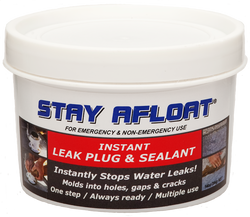I know pretty much zero about the East Coast boating scene, geography, tidal currents, etc. But over here on the West Coast from roughly Anacortes Washington into deep Alaskan Panhandle, logs for whatever reason broken loose from log booms is a real issue. Trees, which are easier to see than dead heads, are also an issue especially after some nasty storms. One time I was headed to Refuge Cove in Desolation and ran into so many tree floating around the area, I took the cowardly way out and headed over to Squirrel's Cove to avoid any undesired intimate contact.
I've hit two deadheads on sailboats but they were going so slow, I just heard the log clunking along the hull. But all of us with express cruisers with decent speed fear hitting a deadhead.
This is from Safe Boating: "A deadhead is a log or heavy timber floating nearly vertical, with little of its bulk showing above the surface. Deadheads can present an extreme hazard to vessels and in tidal areas, deadheads can cause significant damage to marinas and the vessels moored within."
Logs in the water is an issue here in BC; the following is an article of Beachcombers in a dispute with the province over pay of harvesting said logs:
"Beachcombers fight B.C.'s control over log salvaging
ROBERT MATAS
VANCOUVER
PUBLISHED MARCH 24, 2000
UPDATED MARCH 27, 2018
PUBLISHED MARCH 24, 2000
This article was published more than 10 years ago. Some information in it may no longer be current.
0 COMMENTS
SHARE
A group of British Columbia's beachcombers who want more money for the logs they collect along the West Coast has launched a lawsuit challenging the province's authority to regulate their business.
The Western Association of Salvors and Handloggers, represented by the Sierra Legal Defence Fund, claims in a document filed yesterday in B.C. Supreme Court that the federal government has exclusive authority to deal with the log-salvage operators.
The association maintains that beachcombers would be better off financially if the federal government, not the province, had jurisdiction over log salvage.
Although the B.C. government has not officially responded, a spokesman said the province is confident its jurisdiction will be upheld.
The provincial government became involved in the issue several years ago in an attempt to curtail repeated court actions between beachcombers and forest companies that accuse beachcombers of stealing their property.
Stuart Messenger, a manager in the B.C. Ministry of Forests, said finders of lost property do not own whatever they find. But if the owner of the logs cannot be identified, the finders can claim them.
He defended the province's constitutional right to regulate log salvagers, but acknowledged that the government is open to suggestions for a system of compensation that might work better.
"So far, we have not been able to find one," he said.
At the heart of the dispute is the value of cedar, hemlock and other logs that regularly wash up along the shore.
The province licensed a consortium of forest companies, Gulf Log Salvage Co-operative Association, to pay for logs that cannot be traced to their proper owners and to resell the wood."


